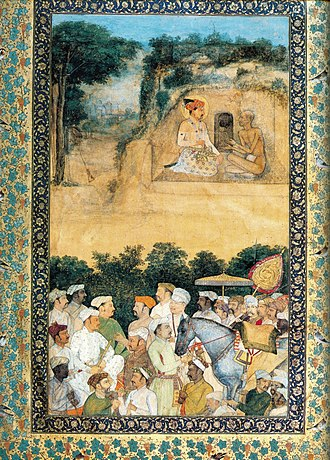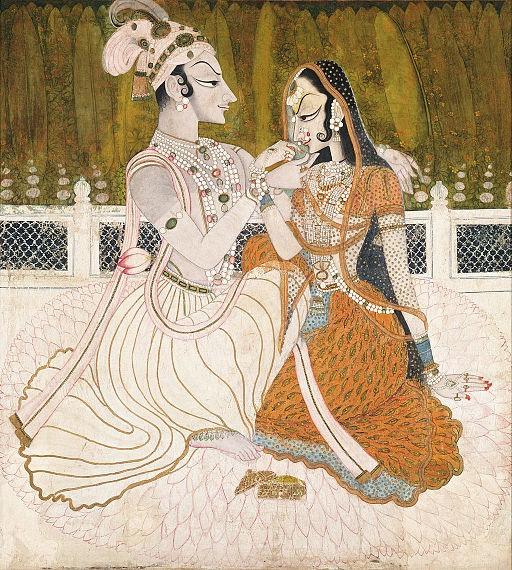
The Indian "Mona Lisa" - a thread on the famous Kishangarh paintings:
The miniature style of painting in India is believed to have originated during the rule of the Buddhist Pala Kings of eastern India (9-10th century CE) (1/n)
The miniature style of painting in India is believed to have originated during the rule of the Buddhist Pala Kings of eastern India (9-10th century CE) (1/n)
This school of art deteriorated in the coming centuries, before witnessing a revival during the late Sultanate period and flourished during the Mughal era. Even after the Mughal dynasty went into decline, the miniature style continued to evolve (2/n) 

Rajputana, a land with close ties with the Mughal rulers, became the new epicenter of miniature painting and Kishangarh, a small princely state in the Ajmer area was where the style reached its pinnacle (3/n)
Use of bold colors, elaborate eyelines and depiction of mythological events added a new dimension to the Rajputana style of miniatures. In the 18th century, Samant Singh ascended the throne of Kishangarh State (4/n)
Samant Singh was an intense devotee of Shri Krishna. He was also a passionate patron of art & culture. During his time, the Kishangarh miniatures reached a new level of excellence. And some of the inspiration came from love (5/n)
In the court of Raja Samant Singh was a singer & dancer by the name of Vishnupriya. Vishnupriya was also very keen in art, poetry, music etc. and it quickly made her a favorite of the king (6/n)
Vishnupriya was better known as "Bani Thani", meaning "well-decked", a reference to how she was always dressed very exquisitely with makeup etc. (7/n) 

Even as most of the miniatures portrayed the love affair of Lord Krishna and Radha, it is believed the artists were depicting the king and his object of affection on their canvas (8/n) 

Raja Samant Singh instructed the lead court painter Nihal Chand to draw portraits of Bani Thani where she is depicted with extended eyes, long & arched eyebrows, and a sharp nose/chin/jaw - a symbol of grace & elegance (9/n) 

In later years, Samant Singh married Bani Thani, abdicated the throne & the couple took up residence in Vrindavan, devoting their life to Krishna's worship. Their love story lives on in the exquisite Bani Thani miniatures (10/n) 

• • •
Missing some Tweet in this thread? You can try to
force a refresh








